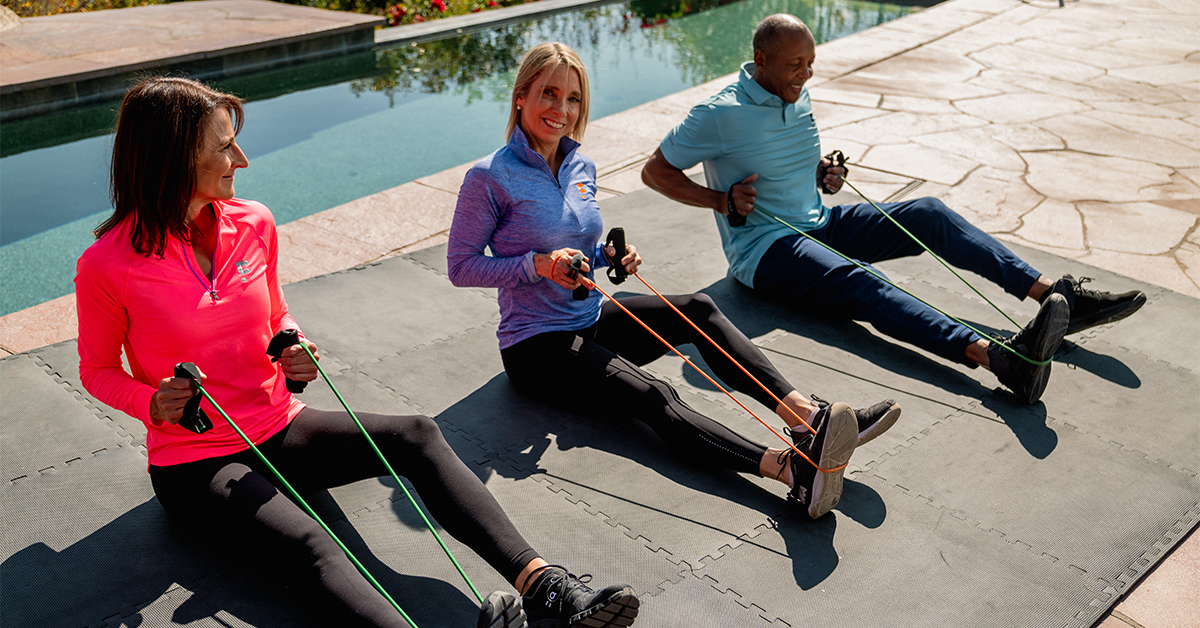
February is American Heart Month so we’re focusing on all things heart health. Many of us struggle to find the time to get all of the recommended types of exercise into our weekly routine (strength training, cardiovascular exercise, flexibility, etc.). We also tend to think of cardiovascular exercise as biking, swimming, running, walking, etc. However, what if you were getting your cardio in while strength training and didn’t know it?
The 3 keys to understanding the basics of cardiovascular exercise are:
1. Knowing your heart rate max.
2. Knowing what percentage of that heart rate max you are and or want to be exercising in
3. Tracking your heart rate during exercise.
First, you need to know your heart rate max (HRM). The way to calculate that is to complete this equation: 220 – your age. For example, if you are 50 years old, it would look like this: 220-50 = 170. 170 represents the maximum number of heartbeats per minute (bpm) while exercising. Exercising above your HRM is considered unsafe. More is not always more. Your HRM might also be affected by any medications you might be taking such as a Beta Blocker. If you have any known heart conditions, please contact your physician to discuss recommended ranges for you and your heart.
Second, you need to know what percentage of your heart rate max you should be in to determine if you are getting in low, moderate or high-intensity cardio with your workout. Moderate intensity is considered 50-70% of your HRM. High intensity is considered 70-85% of your HRM. The American Heart Association recommends 150 minutes of moderate-intensity cardio per week or 75min of vigorous-intensity cardio per week.
For someone with a HRM of 170 would need to be around 85-119bpm for moderate-intensity cardio and 120-144.5bpm for high-intensity cardio.
Now it’s time to figure out if you are getting in more cardio than you think! Next time you are doing a strength training workout, check in with your heart rate. If you are wearing some version of a heart rate monitor this is pretty easy. For those who do not have a device that can track their heart rate, take a few breaks during your workout to check your pulse.
The easiest way to do this is to place the pointer and middle finger from one hand gently on the thumb side of the wrist on the opposite hand (make sure the wrist is relaxed). This is the easiest place to find your pulse. Count how many beats you feel in 30 seconds and multiply that number by 2 to get your BPM.
Hopefully, you’ll be surprised to find that you are getting more cardio than you think with your strength training workouts. One of the ways we help our members get more cardio in is by having CardioFIT workouts as a part of their weekly workout plan.
FITFOREVER Founder, Dr. Jeremy James will be leading a LIVE CardioFIT event on Thursday, February 10th at 9:00 am MST. It’s free and open to FITFOREVER members and non-members alike. Use the button below to sign up and join us!
~ Blaire Brown, PT, DPT, OCS, SST,
FITFOREVER Expert Trainer





